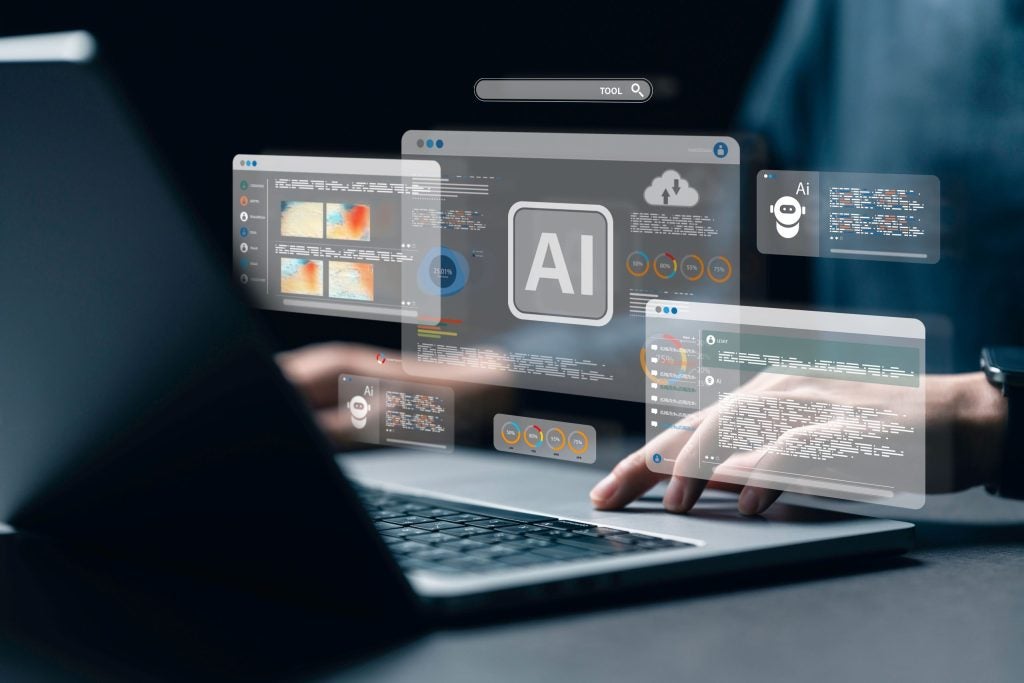Peter Thomas, executive director at the Leasing Foundation, gives an overview of new technologies that will impact the leasing industry. This article’s focus is “what is digitalization?”
What is digitalization?
The previous columns in this series have looked at some of the developments in technology that will affect the asset finance industry in the next decade.
Of course, there are more than those I have covered so far – chatbots, blockchain, Big Data, XaaS and AI – and so in this longer piece for Leasing Life I thought it would be useful to look at the bigger context in which these technologies sit.
The term that is now being used to describe the use of digital technologies in business is digitalization. Chatbots, blockchain, Big Data, XaaS and AI – but also technologies such as cloud computing, mobile apps or web-based services – are all components of digitalization.
What is becoming clear is that digitalization is not just about bolting on a layer of digital service to an existing business model: It is about completely changing the business model itself.
What is digitalization – an example
Here is a simple example: The online bank Monzo, that provides a prepaid debit card, is one of a slew of digital startups in the banking space that aims to change the way money works. It only has tens of thousands of users in the beta of its card service right now, but it will open a current account in 2017, followed by a savings account.
How well do you really know your competitors?
Access the most comprehensive Company Profiles on the market, powered by GlobalData. Save hours of research. Gain competitive edge.

Thank you!
Your download email will arrive shortly
Not ready to buy yet? Download a free sample
We are confident about the unique quality of our Company Profiles. However, we want you to make the most beneficial decision for your business, so we offer a free sample that you can download by submitting the below form
By GlobalDataIs Monzo a bank? Probably not, even though it will have a banking licence. Looked at from the perspective of the high street banks, you would say it is not.
But Monzo is not trying to be a bank. It is a new kind of service that blends technology into the money space. Its business model is not to acquire you as a customer and then sell you more revenue-producing products such as lending, insurance or financial advice, or charge you for every added value service it can.
I have a Monzo card. I lost it, along with every other credit card I own, when I lost my wallet. To freeze my NatWest cards and get new ones took me almost an hour on the phone; my Australian business card was worse – an hour on the phone to Melbourne and a A$50 charge for replacing the card because I am in London.
I froze my Monzo card with one click in its iOS app, and got a new one 48 hours later. I can, in fact, freeze my card in the app any time I like, just in case it turns up in a coat pocket or down the back of the sofa, after which I can just turn it on again.
This is simple stuff, but much more is to come. Monzo will eventually provide a suite of services, including moment-by-moment tracking of spending, all tagged with store, location, expense category and information on spending patterns. It will integrate data on household spending – comparing your heating bill with those of people in your area so you can switch providers, for example, or recommending the best mortgage deal.
If you buy fuel it will compare pump prices and send you to the cheapest place to fill up. It will connect to your Xero accounting service to reconcile spending transactions, report any failed or over-limit transactions in real time, or offer you an immediate reward for getting someone you sit next to at dinner to download Monzo and sign up.
All this using a free smartphone app, and almost none of it provided by Monzo itself.
What is digitalization in action?
Monzo is an example of digitalization in action. Its digitalized business model is based on becoming a hub for other services from other digitalized businesses that operate in the same way – FX transactions from Transferwise, investments from Nutmeg or loans from Funding Circle. It has no desire to provide those services; instead it uses an application programming interface (API) to exchange data with its partners.
Without the constraints – and the head-to-head competition – imposed by entering the market as a direct competitor to what the incumbents see as their core products, Monzo is free to flex to meet customer demands quickly. It can innovate faster and respond to changing customer needs in a way that traditional banks – hampered by decades of complex business processes, legacy IT systems and burdened by regulation – never can.
The disruptive potential of digitalization has been misunderstood by incumbent businesses in many industries – whether that is Waterstones, which failed see the disruptive potential of Amazon, London Black cabs and Uber’s data-driven transport app, AirBnB in the holiday rental market, or the startup Liquidspace that offers office rental of unused office space by the hour, week or year, that will disrupt the premium serviced office market.
What is digitalization’s business model?
What do these examples of digitalization all have in common? They are based on business models that deliver products and services that more closely match customer needs, and do this using digital technologies.
This understanding of digitalization is one that the asset finance industry has not yet managed to fully grasp. It has huge implications for an industry that operates with long-established and inflexible processes, either legacy technologies – or sometimes no technology at all – and a lack of fundamental knowledge about technology in the first place. It has implications for the skills required for the future of the industry, for collaboration between industry partners, for responding to – or better, anticipating and shaping – regulation, and for more effectively using data about customers.
All these topics, and more, were the subject of the recent Siemens Financial Services Game of Agility event at the Siemens Crystal in London in January 2017, at which I was a panellist.
What is digitalization – Siemens event
The event, organized by Emma Thomas, head of sales block and broker, and her team at Siemens Financial Services, was unusual in that it took a broad view of the future of asset finance. It embraced not just digitalization, but also the related topics of industry collaboration and the effects of Brexit – all of which will mean significant change for the asset finance industry.
The audience, primarily drawn from Siemens Financial Services’ customer base in block discounting and brokers, but representing a cross-section of the asset finance industry, heard from panels of speakers who debated the future of asset finance in a digitalized, post-Brexit world that will, on both counts, demand different industry structures and new uses of technology, and so require increased collaboration to ensure that the industry thrives.
Some of the issues discussed included how financing can adapt in the future and the role of digital technology in that adaptation, how to tap into changing customer needs through data and analytics, getting the best value for brokers from digitalization, and the future relationships between brokers and clients in a digitalized world.
Markus Edström, CEO Nordics and sales director vendor finance region north at Siemens Financial Services said in his opening keynote talk on the challenges and opportunities of digitalization in asset finance: “We are on exactly the same journey in commercial finance as we were in consumer finance, but 10 times faster, and we need to prepare for revolution, not evolution.”
What is digitalization – Klarna example
He pointed to Klarna, a Swedish digital finance solution that is used by tens of millions of consumers as an example of the disruptive potential of digitalization.
Other speakers, including James Gearey, chief executive at Siemens Financial Services, commercial finance UK and Nordics, and Ian Smith, chief executive officer at 1pm, discussed where similar disruptions might emerge in asset finance, and what the barriers in the industry are to embracing, understanding and exploiting disruption.
As James Gearey said: “Real collaboration can be uncomfortable; it makes us vulnerable and we see this as risky. But it is imperative, if we are to continue to thrive as an industry, that we step over the risk barrier and collaborate”.
This is easier said than done, however. Digitalization is, by its vary nature, disruptive. The now well-quoted book by Clayton Christensen, The Innovator’s Dilemma, is as relevant now as it was when published 20 years ago.
In the book, Christensen documented and explained the process by which existing markets are disrupted, bringing success to new market entrants and displacing long-established market-leading firms, products and alliances that seemed once impossible to dislodge.
His insight was that it is not just inventions or specific technologies that disrupt markets, but the business models that they give rise to that are disruptive.
What is digitalization: automobiles
A simple example is automobiles: It was not the invention of the combustion engine – nor even the automobile – that disrupted the horse-drawn carriage market; it was Ford’s mass-production of affordable vehicles that was the disruption. That was because automobiles were luxury items that were affordable for only a few people, whereas the mass-produced automobile made the technology available to almost anyone.
Christensen also recognised that entrepreneurs – rather than market-leading companies – drive disruptive innovation. That is because the business environment does not allow market leaders to exploit disruptive innovations when they first arise – because they are not profitable enough in their early stages or their development can take resources away from the need to fight against the competition – and because of a failure to see the disruptive implications of new technologies early enough.
So, in the case of the asset finance industry, what needs to happen next? Simply bolting on a layer of digital service – which in the short term seems attractive – is not the answer. And the constraints of servicing existing customers mean that pursuing a radical implementation of digital technologies would be impossible.
One answer will be for the industry as a whole to start to collaborate to realise the benefits of digitalization. Once fully understood, digital disruption can then be set in the context of the strategies of individual players in the market by the players themselves.
What is digitalization – decision making
This will mean placing digitalization at the centre of decision-making by market-leading companies and – on point with the collaboration theme at the Siemens Financial Services event – working together as an industry to understand some of the new technologies and their implications for business models, products and customers.
A central part of the education and learning process is around the ways technologies such as AI, blockchain, chatbots, the cloud, Big Data and the like really work.
One of the principles underlying all these technologies is the network effect: These technologies become more useful – for businesses and customers alike – as more people use them. That is because all these technologies are really about the power of data and how it can mined for useful insights.
The second principle is that of the API, software that allows for building in ways for data to be seamlessly and openly exchanged between partners. A simple example is Google’s Maps API, which allows data from Google Maps to be embedded in web pages – but any kind of data can be exchanged using an API. APIs are the way that new services are created that can change the nature of business models.
The Monzo example I used earlier is really about what happens when more customers, drawn by a seamless user experience and a focus on one or two simple products, use the service: The more people use Monzo, the more useful it gets.
What is digitalization – traditional banking
Compare this to the traditional banking model, where the size of the customer base has no effect on the product. Or think about Uber, which has been innovating at such a pace that every time the app updates there are now new ways to get yourself and your stuff around London (or Beijing, or New York, or wherever) – two kinds of Economy car (UberX and Uber XL), two kinds of Premium car (UberEXEC and UberLUX), UberASSIST for those with mobility problems or who ride with service animals, UberWAV for non-able-bodied people, UberRUSH for rapid bike and on-foot deliveries, UberEATS for food delivery, a metered taxi service and a low-end UberPOOL offer for ride-sharing.
What is next? Self-driving transport in the next five years certainly – but none of it owned (or even operated) by Uber, as its partnership with Volvo shows.
Uber’s business model is truly digitalized, and just like Monzo is not a bank, it is a mistake to think about Uber as a transport company.
What is digitalization: Uber
Uber recently updated its terms and conditions to ask for permission to track your location for five minutes after you have exited a ride. One aim is to improve accuracy of pickups and dropoffs for riders, but it is not a stretch to see how the data about what you do when you get somewhere – where you go, what you buy and see or who you meet – can be monetised, partly by making it available through an API to other companies where there is value in doing so.
Uber, in the future, is not really a transport company: It is, in the true sense, a digitalized data company.
The need is for the asset finance industry is to really understand and embrace digitalization, and – working together – evaluate, test and, where feasible, digitalize.
This might mean a collaborative venture in digitalization led by established market players in cooperation with industry bodies; it certainly means placing digitalization at the centre of thinking, industry-wide, about recruitment, retention and development of the people who will lead the industry.
And from a customer and regulatory perspective, it is about making sure the industry is, and is seen to be, fully understanding of, and embracing, digital disruption.







